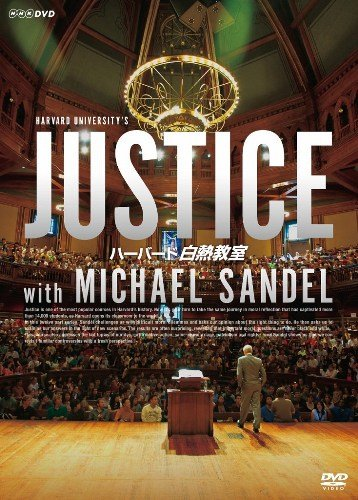Making Big Ideas White-hot
It’s fairly common to see college professors become hugely popular in Japan. For one reason or another, they’ll suddenly become regular guests on TV variety shows, and their books will start selling like crazy. This happens to foreign professors, too. Like Harvard University’s Michael Sandel.
NHK, Japan’s widely-viewed public TV station, made Sandel into a star in Japan when it began airing his Justice lectures. NHK’s title for the program is Harvard White-hot Classroom (Habado Hakunetsu Kyoshitsu / ハーバード白熱教室).
NHK DVD at Amazon Japan
A lot of people watched this program. I mean a LOT. So today, you can walk into a small, general bookstore just about anywhere in Japan and find Sandel in translation, books about Sandel’s books, and books about Sandel’s teaching style.
Professor Sandel was characteristically humble in his reaction to the Japanese public’s swooning over him and his Justice course.
“I am astonished and delighted by the popularity of ‘Justice’ in Japan. There seems to be a great yearning, in Japan as in the U.S., for public discussion of big ideas, especially about ethics and values.”
–Japan Real Time (WSJ)
I think he’s right about the “yearning” in Japan to learn and discuss big ideas. But the fact is, it took someone like him, with his engaging teaching style, to make it happen. How does he do it? Certainly not by remaining behind the lectern and delivering a dry talk. What then? At Organizing Creativity, Daniel Wessel explains many of Sandel’s teaching practices:
- Well-Timed speech
- Suiting movements
- Shows everyday relevance of the issues
- Encourages participation [Daniel explains 9 strategies]
- Minding the overall course of the discussion, lecture, course
- Keeps the discussion personally relevant but in a personal distance
Daniel explains these points in quite a bit of detail, so do take a look.
Sandel may be a genius, but I suspect that he has also worked incredibly hard to package and deliver his “big ideas” so effectively. Don’t overlook this point: Sandel is teaching some of the world’s most intelligent young people, and yet, he doesn’t take the “easy” route of using the arcane language of his discipline. Instead, he communicates some of the world’s deepest philosophical and ethical thinking through language, stories, and techniques that can appeal to ordinary people in foreign countries. That’s truly remarkable.
For the past couple of years, I’ve been working with a friend and colleague to do something similar for English learners (especially for ESL / EFL learners, but also for emerging readers who are native English speakers).
I meet a lot of people in Japan who have given up on learning English after finishing their formal education. Schools motivated them through tests and entrance exams. “Learning English” was/is often the primary goal of English learning. So, what we’re trying to do at BeeOasis.com is to help people refocus their language-learning goals on things that really matter, like the big ideas they can learn and the meaningful connections they can make.
We’re convinced that people’s curiosity about arts and sciences around the world can help to sustain individual and community learning for a lifetime. Okay, maybe that’s a complicated way to put it. What I mean is this. We think that big ideas are white-hot. And we think that, if we tell them right, they’ll light a fire that no one can put out.
–––
 RSS - Posts
RSS - Posts

Kennedy 9:22 pm on March 10, 2012 Permalink |
He does not give surmountable conclusions at the end of his lectures, but leaves everybody hanging and guessing, while at the same time making one appreciate that the issues discussed are bigger than oneself, and the debates will go on.
Randall Short 3:48 pm on March 11, 2012 Permalink |
Good points. Being left guessing . . . being drawn up into stories and ideas bigger than yourself . . . you can’t help but think and talk with others about it. Sort of like what happens with some of the best TV drama series. But we tend to make class sessions like bad sitcoms. There’s never a problem that can’t be solved in 22 minutes.